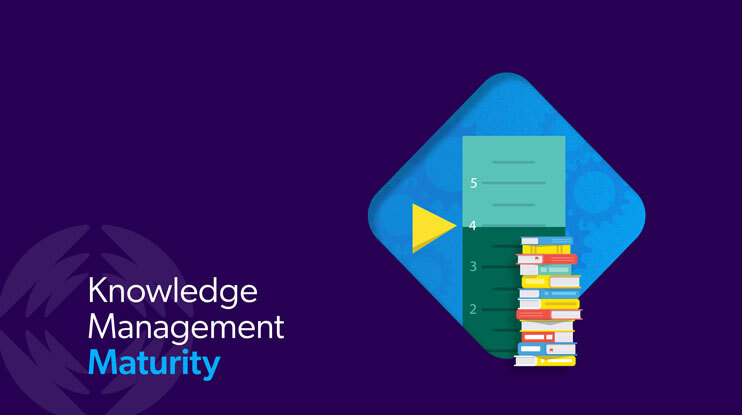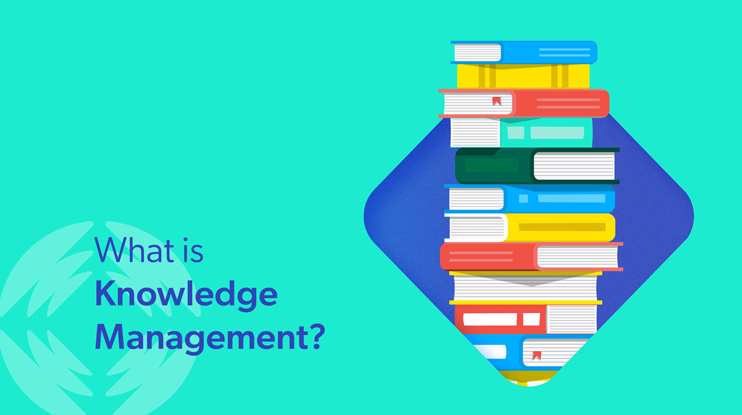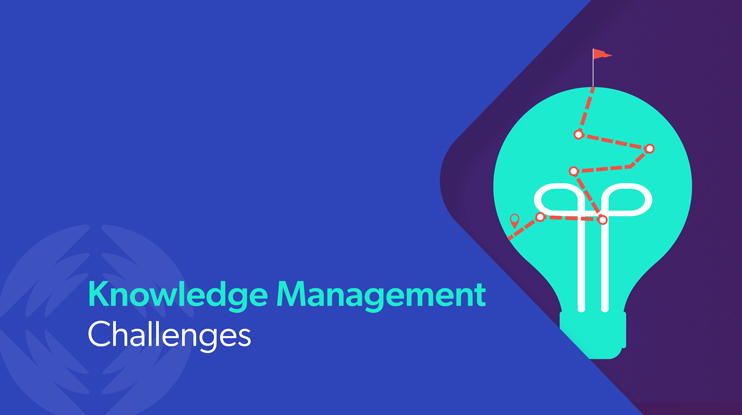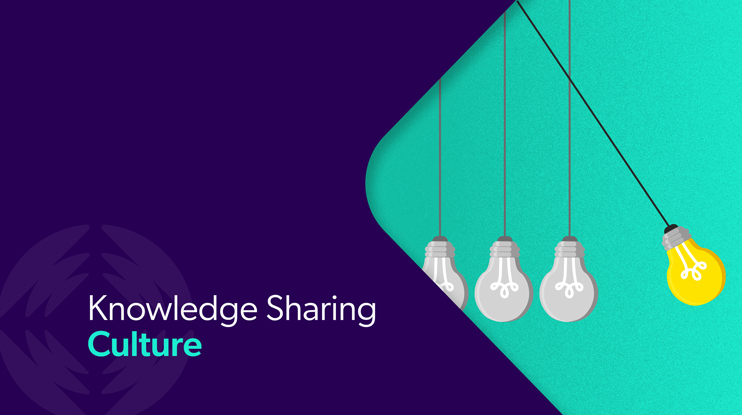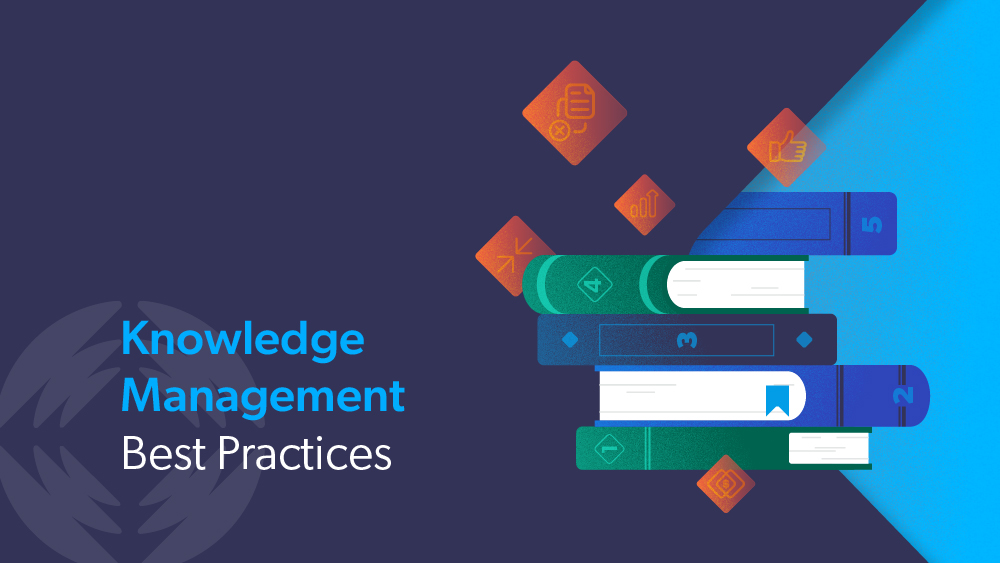Optimized customer service means optimized knowledge management. Yet most knowledge leaders want their programs to be better optimized—even the most mature ones.
Optimizedis the final maturity phase of TSIA’s updated Knowledge Management Maturity Model 3.0 Framework for a reason: Getting it right can impact all aspects of customer service, from satisfaction and cost to organizational performance and overall efficiency.
And getting knowledge management right has never been more complex.
In this post, we’ll look at the principal drivers of this complexity, as well as how you can measure your own program’s KM maturity against the updated TSIA model.
KM Maturity Depends on AI
AI in knowledge management isn’t new, but it’s evolving. Fast. In a cross-industry KMWorld survey, respondents highlighted the following roles of AI in content creation:
- Automating repetitive tasks (66%)
- Generating first drafts (51%)
- Enhancing personalization (42%)
- Assisting with real-time content updates (37%)
The majority of respondents agreed on an important caveat:
AI will augment human creativity, rather than replace it
Fitting, given the continued evolution of GenAI in knowledge management, in particular. GenAI lends well to business process augmentation, not only for knowledge workers. According to State of Generative AI, a market study done in collaboration with Customer Contact Week Digital, 81% of contact center leaders expect GenAI to make a meaningful impact.
There’s more:
- 86% have plans for GenAI investments
- 70% are confident that GenAI helps with self-service personalization
- 91% are prioritizing GenAI solutions that impact customer experience and cost
That contact center leaders are prioritizing GenAI in their operations—that they see the value for enhancing knowledge management with GenAI, too—is good news. It’s also a sign of the time: just as we’re adapting to GenAI, the next frontier of AI is already here.
Agentic AI Changes Everything
The basic difference between GenAI and agentic AI is that the latter can operate autonomously. Given the right inputs, trust boundaries, and secure retrieval methods, agentic AI can proactively solve top knowledge management challenges—ideally with a lot less human input. Sometimes, with none at all.

Agentic AI has in many ways taken the contact center industry by storm. It’s new, it’s powerful, and its potential is considerable. Expect Agentic AI to factor heavily into future knowledge management maturity models, but don’t forget: like any AI system, agentic AI relies on relevance and trust.
KM Maturity Needs a Solid Framework
To evaluate the maturity of your KM program, you’ll need a reliable framework. The right framework provides practical understanding of the interconnected parts of a successful knowledge management program.
Use a framework to understand where your organization stands currently, and what’s needed to successfully evolve. The TSIA Knowledge Management Maturity Model 3.0 Framework is a good place to start. It was recently updated to reflect new advancements in GenAI.

4 Phases of TSIA Knowledge Management Maturity Model 3.0
The four phases of the updated TSIA model are:
- Start-up
- Overheated
- Maturing
- Optimized
All knowledge management initiatives fall somewhere along this four-phase progression. Here are the high-level characteristics of each:
| Start-up | Low adoption of knowledge management best practicesAbsence of meaningful performance metrics |
| Overheated | Decent performance, but unsustainable practicesDependent on manual effort and/or workarounds |
| Maturing | Some best practices adopted but unrefinedStill not driving significant performance improvements |
| Optimized | High adoption of best practicesStrong performance indicatorsExecution at scaleWorking toward greater business alignment |
At the core of this framework is a red dotted arrow that moves up and to the right. As your organization continues adopting best practices and moving toward the Optimized stage, the better performance (i.e., KPIs) you can expect.
Key Components of the TSIA Maturity Model
The four main components of knowledge management are culture, people, process, and technology. To self-assess your KM maturity level, start with these four components of information management. You’ll find that best practices within each part must be implemented and integrated together for an efficient and successful knowledge management program.
- Corporate Knowledge-Sharing Culture: How well is your knowledge management program funded and adopted across the corporate entity?
- People: To what extent do you empower people to participate in knowledge creation, sharing, access, improvement, and use?
- Process: How efficient and scalable are your knowledge management workflows? What about content management, quality, and relevance?
- Technology: How well-suited is your hardware, software, and information technology infrastructure for omnichannel information retrieval? What about your information systems?
Think of these components as an iterative, overlapping ecosystem. Each part feeds into the next, creating a larger system for the development, capture, and sharing of information between groups.
Each component is as crucial as the last.
KM Maturity Requires Frank Assessment
To determine your current standing, the TSIA recommends evaluating your current knowledge processes against each core component. Each component is designed to guide internal conversations about what’s needed to improve organizational knowledge sharing and evolve your company’s knowledge management practice.
Here’s a breakdown of what goes into each:

Your Corporate Knowledge Sharing Culture
An Optimized corporate knowledge sharing culture will have:
- KM Program Type: Some organizations rely on a CRM knowledge base; others, an enterprise content management (ECM) program. An Optimized program will have a formalized program type.
- KM Metrics Exec Ops Review: Regularly (quarterly, for example) review of KM metrics, specifically, with visibility at the executive operations level.
- KM Program Budget Process: Careful planning and integration of KM cost components, including formalized processes for reporting on and adjusting them.
- Customer Submit KM Article: A means for customers to submit knowledge articles that’s integrated into the flow of case submission, for example, or within community forums.
- Self-Service Success Rate: Optimized organizations not only formally recognize this metric, but have the processes in place to measure and monitor it.
- Implicit Case Deflection Rate: Rate of cases solved without having to contact support, typically through the use of self-service knowledge resources.
- Explicit Case Deflection Rate: Percentage of customer support issues that are deliberately diverted from traditional support channels to self-service options (knowledge base, FAQ, chatbot).
- Self-Service CSAT Rating: Measuring and monitoring of a CSAT metric dedicated solely to self-service interactions.
- Customer Service Portal Case Percent: This metric evaluates portal effectiveness by comparing the percentage of support cases handled through the customer service portal to the total number of support cases.
Relevant reading: Self Service vs. Case Deflection: What’s the Difference?
Your People
You’ll know your people are in the Optimized phase when your organization has:
- KM Activity Performance Objectives: Established performance objectives, for people inside and outside the knowledge management team, that you track, report, and evaluate against.
- KM Program Manager: A strategic role responsible for developing, implementing, and overseeing the knowledge process within an organization.
- Content Management Approach: A well-structured approach for creating, organizing, and distributing digital content. For example, Tyler Technologies moved from relying on its CRM for content management to the Coveo AI-Relevance™ Platform.
- Support Org Levels: For example, Frontline Support, Technical Support, and Expert Support. The existence of support levels indicates a stronger KM maturity level.
- KM Variable Compensation: Performance-based pay structures that reward employees for achieving specific KM goals and objectives.
- Average Content Creation Rate: Sometimes used in variable compensation programs, this metric measures the speed and efficiency at which content is produced within an organization.
- Average Content Participation Rate: Measures the level of engagement and interaction with content within an organization or community. This metric is particularly relevant for knowledge management and learning and development initiatives, where high participation rates indicate effective knowledge sharing, collaboration, and organizational learning.
- Support Agent Onboarding: Not only is an onboarding program in place, but your organization integrates KM best practices within agent onboarding for greater alignment and participation.
Your Process
In full maturity of the Optimized phase, knowledge management processes expand across the enterprise (development, quality assurance, product management, product marketing, marketing, billing, and so on). Your teams use knowledge management best practices to reveal and address the root causes of high volume support cases, high-cost business disruptions, etc.
Indicators of optimized knowledge management processes:
- Closed Incident Linking: The process of associating resolved support incidents or cases with relevant knowledge management articles or documentation.
- Best Practice Capture: Capability for identifying, documenting, and sharing effective practices that drive business success.
- Knowledge Base Gaps Identification: Means for spotting missing, outdated, or inadequately documented information. Within the Coveo platform, for example, you can use Coveo Usage Analytics to identify content gaps.
- Knowledge Base Article Publish Time: The time it takes from the initial request or identification of a knowledge gap to the article being live and accessible to users. A useful measure of the efficiency and productivity of your overall program.
- Knowledge Base Content Review Frequency: Content Review Frequency: The regularity at which your knowledge content is reviewed for improvement actions and updated.
- Knowledge Base Content Archiving Frequency: The regularity at which outdated or obsolete knowledge base content is systematically archived.
Your Technology
Your knowledge management model enters the Optimized phase once you have a few advanced components in place:
- KPI Tracking: In order to make good on the other components, nearly all of which include some form of knowledge KPIs, you need the technology and tools capable of tracking these KPIs.
- Tech Quality Review: Systematically evaluating the technology stack and tools used within a knowledge management system to ensure they meet the required standards of quality, effectiveness, and user satisfaction
- Advanced Search Development: The extent to which you allow users to refine their searches and connect to the right content. These days, advanced search typically includes AI search functionality and generative experiences.
Relevant reading: How Forcepoint Unified Siloed CX and EX with AI
Why Assess Knowledge Management Maturity?
To empower employees and customers, scale your products and services, and grow as an organization, your people need instant access to relevant information, i.e., your institutional knowledge. Knowledge management is foundational to collective intelligence—including the customers and partners that your workforce exists to serve.
The TSIA maturity scale is as comprehensive as you’ll find. The maturity scale encourages an evolution toward what TSIA calls enterprise-wide knowledge management programs, which lead to better business performance:
- 33% lower incident cost per case
- 3.1% higher support renewal rates
- 1.7% lower support voluntary attrition rates
Some of your knowledge management initiatives will be farther along than others. We encourage any enterprise to determine their own maturity and begin the journey toward improvement and innovation.
Dig Deeper
Offer easy knowledge management across your enterprise applications to help employees be effective, productive, and empowered in their work, wherever they are.

